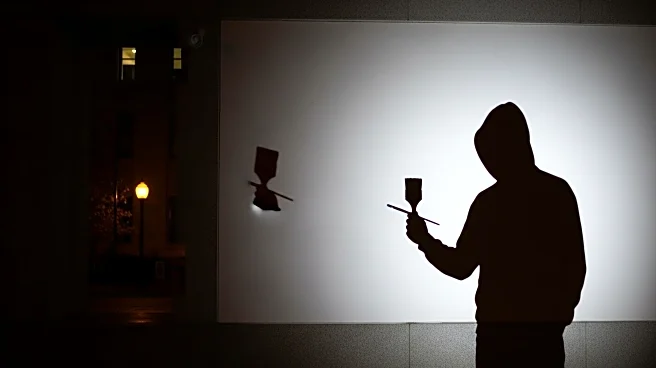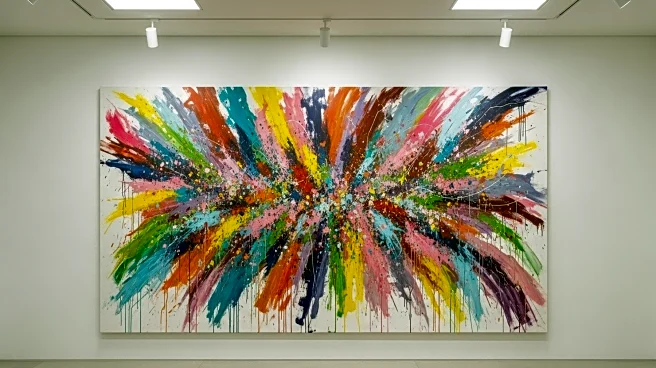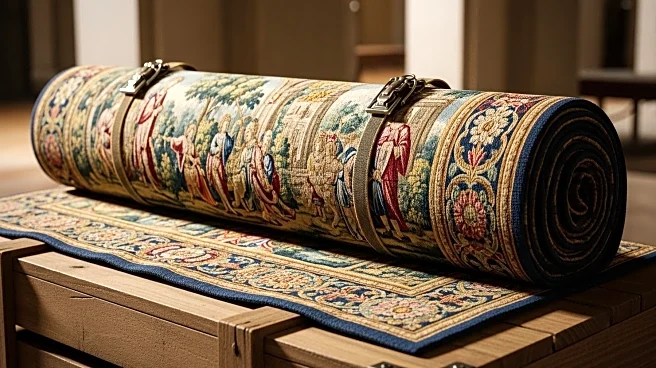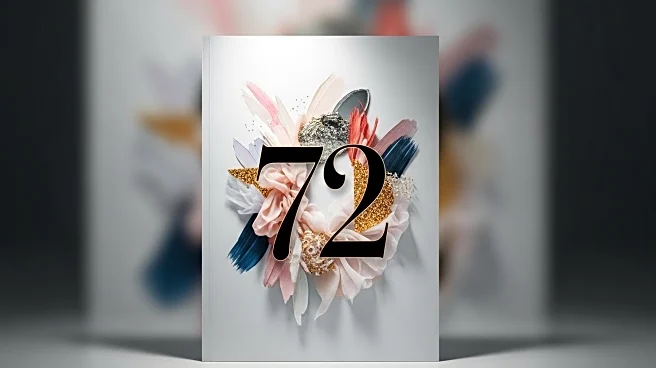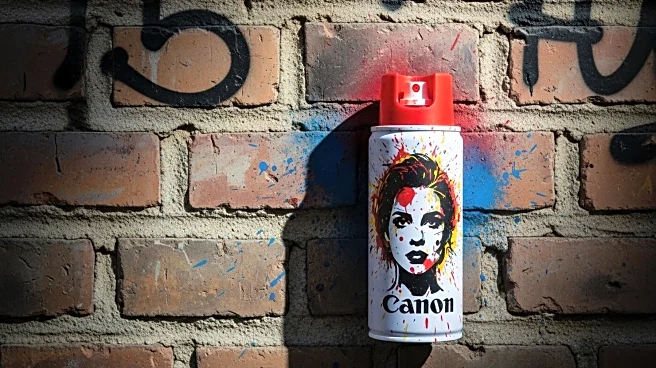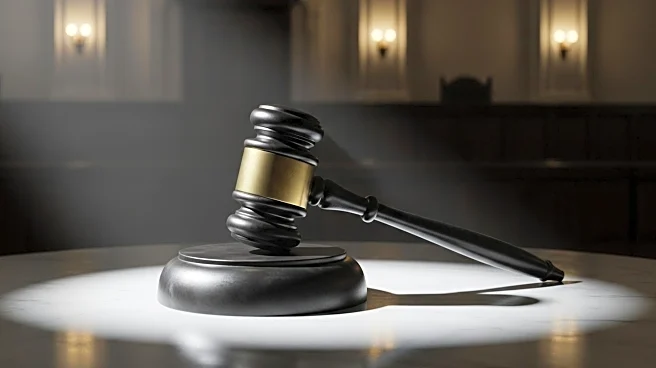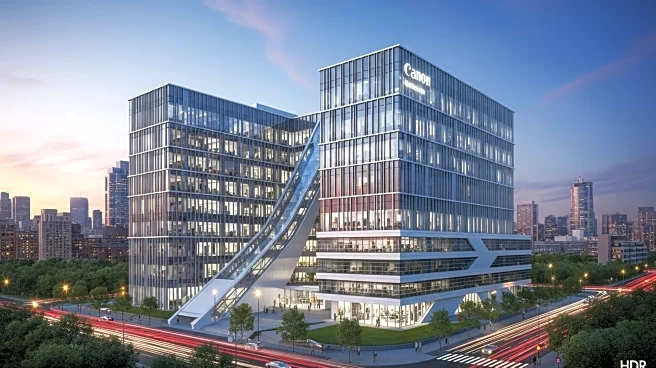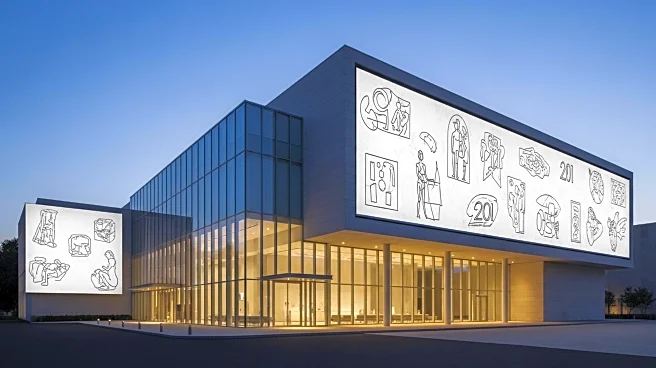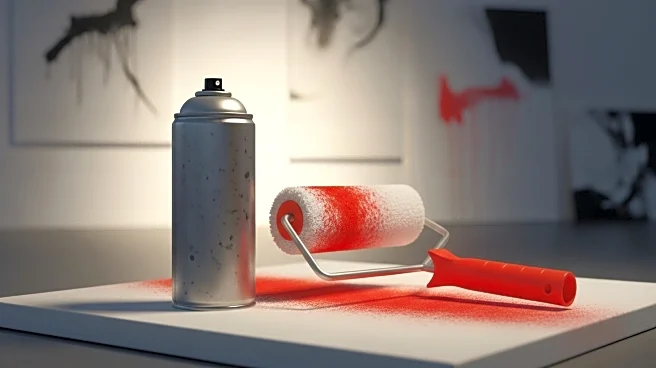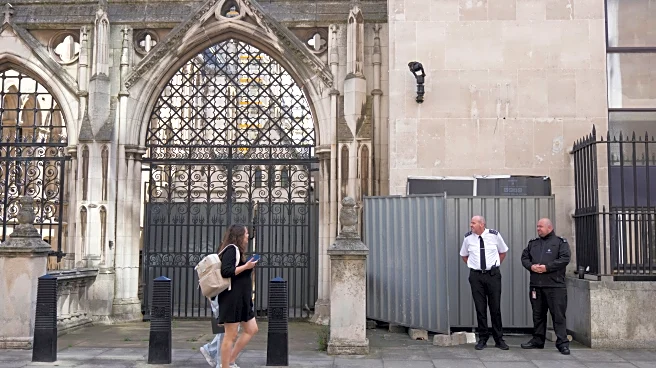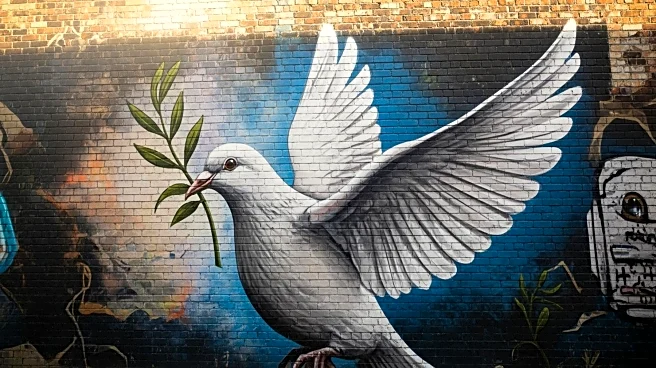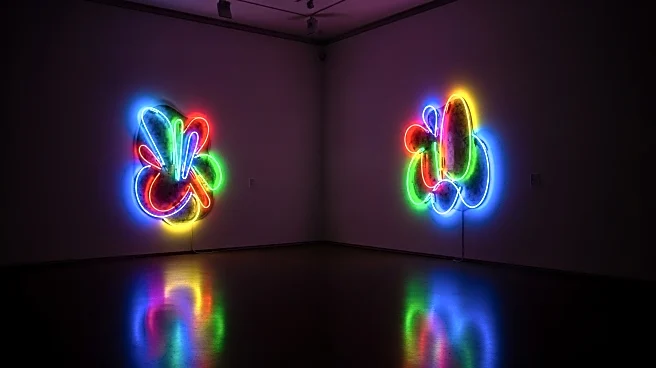What is the story about?
What's Happening?
A mural by the anonymous artist Banksy, depicting a judge beating a protester, was removed from the Royal Courts of Justice in London. The artwork, which appeared on Monday, was quickly covered up after Banksy authenticated it on Instagram. Court administrators ordered its removal to preserve the historical character of the 143-year-old building. The Metropolitan Police are investigating the mural as potential criminal damage. Banksy is known for his critiques of government policies, and some activists interpreted the mural as a comment on the U.K. government's ban on Palestine Action, a group labeled as a terrorist organization. Nearly 900 people were arrested at a protest against the ban last Saturday.
Why It's Important?
The removal of Banksy's mural highlights ongoing tensions between artistic expression and legal boundaries. The incident underscores the challenges faced by artists in expressing political dissent, especially in historically significant locations. The mural's removal may impact public discourse on government policies, particularly regarding freedom of expression and the treatment of activist groups. The controversy also reflects broader societal debates on the role of art in political activism and the limits of artistic freedom in public spaces.
What's Next?
The investigation by the Metropolitan Police could lead to legal actions against those involved in the mural's creation or display. The ongoing legal battle over the ban on Palestine Action may continue to draw public attention, potentially influencing future protests and government responses. The incident may prompt discussions among policymakers, artists, and civil society groups about the balance between preserving historical sites and allowing contemporary artistic expression.
Beyond the Headlines
The removal of Banksy's mural raises questions about the ethical implications of censoring art that critiques government actions. It may lead to discussions on the cultural significance of street art and its role in shaping public opinion. The event could also influence future interactions between artists and authorities, potentially affecting how public art is regulated and perceived.
AI Generated Content
Do you find this article useful?
